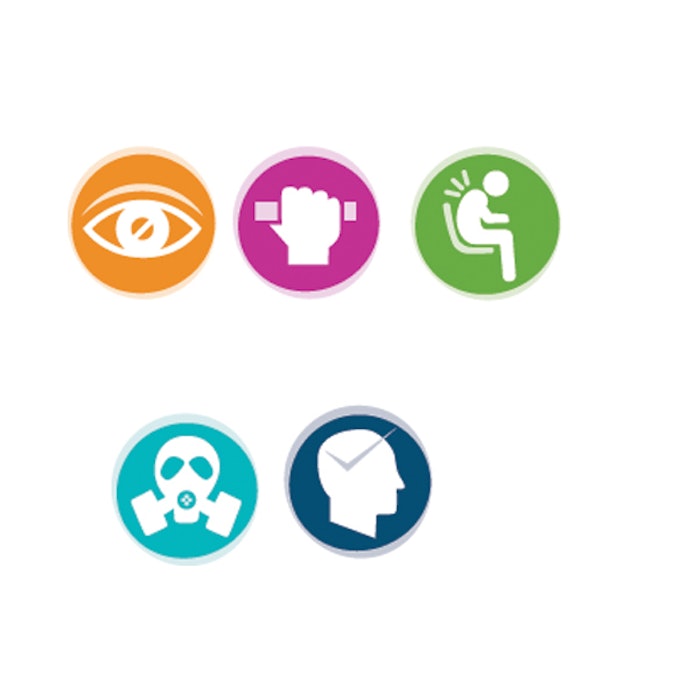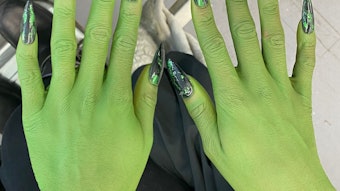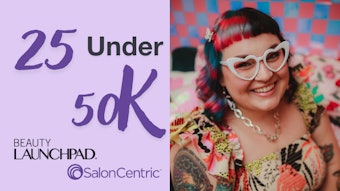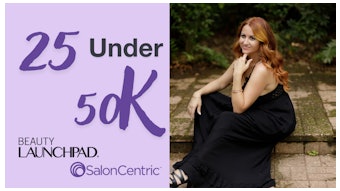
To take care of your clients, you must first take care of yourself. Here’s how to prevent some of the most common health concerns among lash and brow techs.
As a beauty professional, you spend countless hours taking care of your clients. But because the work of a lash and brow technician can place stress on both body and mind, it’s equally important to take care of yourself. “When you put your own health on the back burner, it won’t be long before your artistry and business are affected,” says Sarah Elaine Moore, a Los Angeles-based beauty and wellness consultant and trainer for Glad Lash, Inc. “After a decade of providing eyelash extensions, not a day goes by when I’m not reminded of the importance of taking care of my mind and body.” From eye strain to wrist pain, backaches to emotional angst, the list of potential health concerns can be extensive. But with the self-care tips and tools that follow, keeping yourself healthy won’t be nearly as hard.
Save Your Sight
Being able to see clearly is crucial when you work around a client’s eyes, and yet the job can compromise your vision in a variety of ways. That’s why you should be sure to see your eye doctor annually to keep tabs on how much eye strain may be affecting your sight, says Leah Lynch, owner of Beautique Salon & Spa in Newburyport, Massachusetts, and master trainer for Lash Affair Academy. From there, create a vision-friendly work environment, which includes lighting that makes lash application easier. “An esthetic loupe or professional makeup lighting with full-spectrum bulbs are the best choices and should be used directly over the client in addition to adequate overhead lighting,” says Lynch. “Avoid flourescent bulbs as they have a flicker that is not necessarily perceived by the naked eye, and they can fatigue the eye over time or cause vertigo.”
To further enhance vision, many techs wear glasses with 1x to 3.5x magnification or loupes. Check out rosemicrosolutions.com or designsforvision.com for loupes at different price-points, suggests Ria Hountas-Hart, BSN, RN, certified lash artist and owner of Lashtique in New York City and Long Island, New York. If you’re unsure of which eye products will best suit your needs, again, head to the optometrist or ophthalmologist. “Your doctor will know if it’s preferable for you to buy the magnifying products on the market, or opt for a prescription,” says Moore. Finally, take plenty of eye breaks during and between services. “When you do, focus on something at a long distance, and blink often to refresh the eyes,” suggests Lynch. “Also, massage the eyelids and areas over the brow, temples and upper cheeks one or two times a day.”
RELATED: Set Standards and Lash Integrity with Your Clients
Get a Grip
Steady hands and nimble fingers are essential to performing your job. But the movements you perform repeatedly can lead to pain, cramps and even carpal tunnel syndrome. Using quality instruments is arguably the best first line of defense; look for forceps that close properly, so you don’t have to grip them too tightly. “You want tools that will do some of the work for you,” says Soo-Jin Yang, owner of Illumino Lashes in Oakland, California. It’s also a good idea to sharpen instruments regularly so that the tips are refined and aligned.
Watch your technique, too; a return to proper form may be what’s needed. “You may find yourself gripping your tweezers tightly when concentrating or bearing down with your isolating hand while looking away to select your lash,” says Lynch. “Also, never hover your hands above the client while working. Use the client’s forehead to rest your hands and brace your wrists; [don’t worry—your clients] will find the weight comforting.”
Finally, try to take 10- to 15-minute breaks between appointments; vary your service offerings so you’re not using the same muscles for extended periods of time; and perform hand and wrist exercises and stretches daily. “Get a stress ball to squeeze regularly,” suggests Lynch, who also offers these stretch suggestions: Extend your arms out straight and point your fi ngers to the ceiling, then to the floor. Then, interlace your fingers and push your palms outward, and fi nish by circling your wrists.
RELATED: Talking Fluffy Lashes with Patrick Ta
Don't Be a Slouch
Bending over clients for long periods of time obviously won’t do your body any favors. A 2009 study found neck pain to be the most common musculoskeletal complaint among cosmetologists, followed by hand/wrist and low back pain. Self-reported risk factors included prolonged sitting, reaching far and awkward body postures. To minimize these concerns, you must have a comfortable seat that you can position properly. “Your chair should be at a height that allows your feet to be fl at on the floor,” says Lynch. “This is widely agreed upon as the safest position for protecting muscles and joints. This means that if you don’t already own an adjustable chair, it’s time to purchase one.”
Your client’s bed height is the other key consideration. “There’s no exact bed height that works for every lash artist but, generally, you should always be looking out and over, not up or down,” notes Lynch. “Have the client’s head as close to the head of the bed as possible so you don’t have to reach, and purchase a bed that you can put your knees under comfortably without having to spread your legs.” SugarLash also makes an Ergonomic Lash Pillow that helps to keep clients at an ideal height, and the PremierLash Ergonomic Spa Pillow is another great option.
The American Chiropractic Association also offers these posture pointers: Keep your feet on the floor or on a footrest if they don’t reach the floor; don’t cross your legs; keep a small gap between the back of your knees and the front of your seat; adjust the backrest of your chair to support your back or use a back support; and relax your shoulders and keep forearms parallel to the ground. Finally, avoid sitting in the same position for long periods of time. “This is why it’s so important to move around between clients,” says Lynch. If you find that you’re still slouching, check out the SugarLash LashPRO Therapy Back Support Brace at sugarlashpro.com.
RELATED: 7 Top Traits of a Winning Website
Clear the Air
Although not specific to one category of beauty pros, a recent report by Women’s Voices for the Earth, a Missoula, Montana-based environmental health advocacy group, found that breathing problems such as asthma, coughing and nasal symptoms are the second most common type of health concern among salon workers (the most common concern is skin conditions). “According to material safety data sheets (MSDS), exposure to large amounts of the cyanoacrylate in adhesive affects mucous membranes and the respiratory system,” says Courtney Buhler, CEO and owner of SugarLash in Edmonton, Alberta, Canada.
To improve air quality, the aforementioned report recommends ensuring adequate ventilation by opening doors and windows whenever possible; installing a ventilation system with external exhaust and the ability to make multiple air changes per hour; installing a built-in local exhaust fan near work stations; stocking less toxic products; and using respirators with organic carbon chemical cartridges, or N95 respirator dust masks. You can also use products designed to absorb adhesive vapors and fumes. “Products like these should be placed strategically near the fume source and will last up to four months,” says Lynch. “The crystals [in these products] can be reused after being ‘charged,’ so to speak, by the sunlight. [Odorabsorbing products that use] gel are also available and work similarly but need to be completely replaced every few months.”
Check Your Head
Even when you love your job, stress can take an emotional toll. “It takes a lot of energy to be of service to people— you have to be a graceful master of managing different personalities and needs,” says Moore. “Sometimes it may feel that you are absorbing your clients’ moods or stress, but with practice, you can become the dominant force of peace in the room, and stressed-out people will adjust to you.”
That’s a big reason that Lynch suggests sticking with uplifting topics when talking with clients. “Avoid going down the path of gossiping or complaining,” she says. “Not only will you feel better and more refreshed at the end of the day, but also your clients will leave with a more positive frame of mind.”
Time management is also key. “When I started doing lashes, I couldn’t say no,” says Buhler. “I saw clients at all hours. I was making great money but I was miserable.” To regain peace of mind, Buhler reined in her schedule. “I put my booking online so that clients could see what was available—and that way I didn’t have to say no.” Hiring additional staff also helped Buhler—and can help you, too.
When you’re not working, try to use your free time to really recharge. “Do something indulgent—physically and spiritually and with intention,” says Hountas-Hart, who recommends getting massages regularly. Many techs are also big advocates of meditation. (If you’re a newbie, check out headspace.com.) After all, when your mind is clear and calm, you’ll be better able to care for your clients—and that, along with the many other health-boosting strategies mentioned in this article, will lead to the ultimate in personal and professional success and satisfaction.
–by Alexa Jay Sherman











